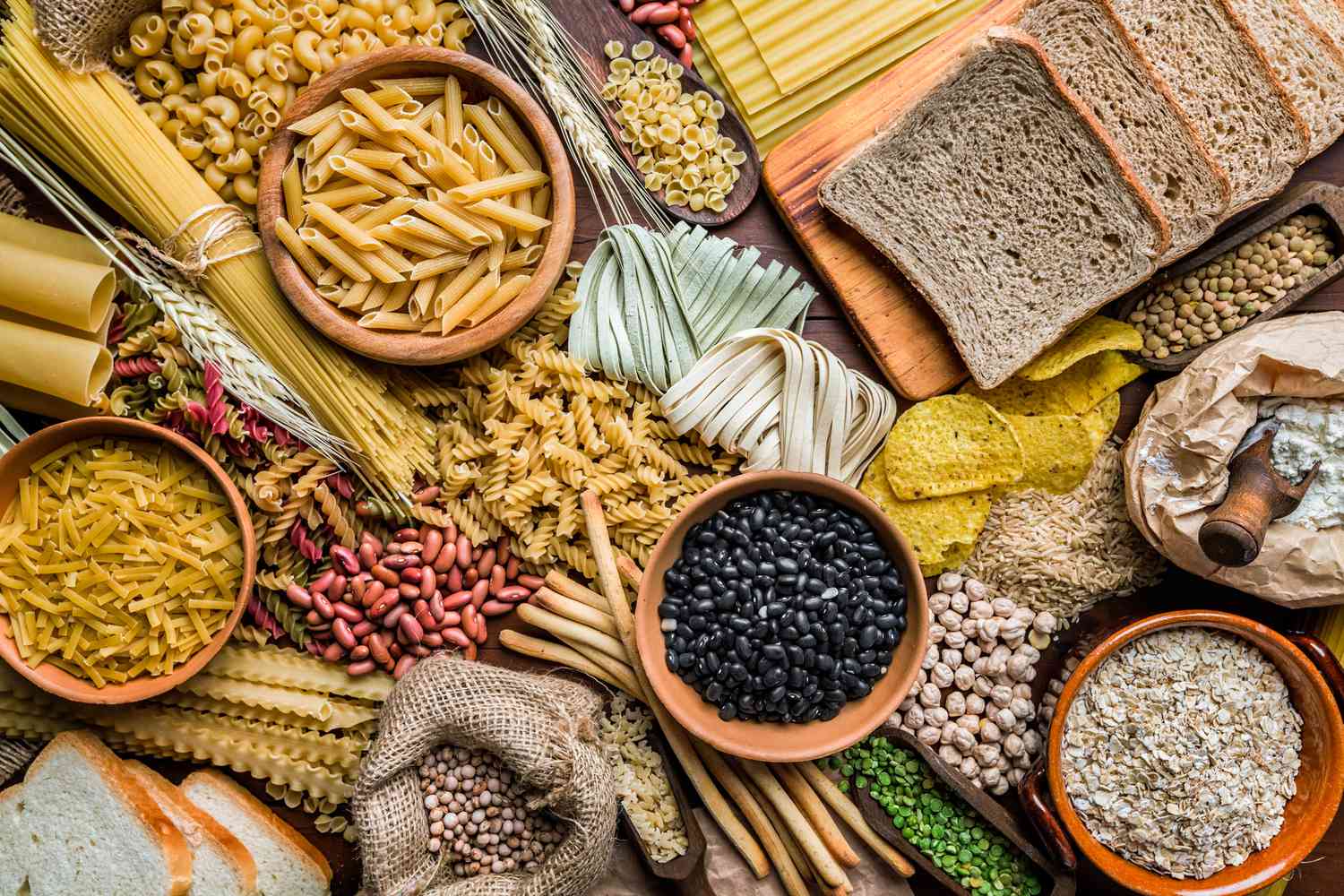

Carbohydrates
What are carbohydrates?
Carbohydrates are a nutrient that provides energy and other health benefits. Carbohydrates are present in all fruit and vegetables, breads and grain products, and sugar and sugary foods.
It is best to choose carbohydrate-rich foods that are healthy and full of dietary fibre. Try to limit your intake of snack foods, as they are high in kilojoules, saturated fat, sugars and salt, and have very few nutrients.
Types of carbohydrates
Sugars, starches and some types of dietary fibre are carbohydrates. Sugars include:
- glucose — in fruit, honey and some vegetables
- fructose — in fruit and honey
- sucrose — from sugar cane
- lactose — in all types of milk including breast milk
- maltose — in malted grains
Starches are also known as complex carbohydrates. Starches can be found in:
- legumes
- nuts
- potatoes
- rice
- wheat
- grains
Starches are also found in cereal products such:
- pasta
- breakfast cereals
- flour
- polenta
- couscous
- burgul (cracked wheat)
- quinoa
Dietary fibre is found in many different plant foods including:
- vegetables
- wholegrain foods
- legumes
- fruits
- nuts
- seeds
There is not enough sugar in fruit and milk to be a problem. But the sugars and starches in many snack foods are highly refined. You should only eat biscuits, sauces and confectionery in small amounts.
How are carbohydrates digested?
Carbohydrates are digested in the small intestine. They are broken down into simple (single) sugars such as glucose and fructose.
These sugars are absorbed into the bloodstream and can be used for energy. Some sugar is converted to glycogen and stored in the liver. Between meals, liver glycogen is converted back into blood glucose as an energy supply.
Glycogen is also stored in muscles for muscle activity. Carbohydrates not used for energy or glycogen storage are converted to fat.
Glycaemic index
The speed at which the carbohydrates in a food are digested to glucose is called the food’s glycaemic index (GI) value.
Low GI foods are broken down slowly. The glucose, or energy, from their carbohydrates is released into the blood over several hours. Low GI foods prolong digestion due to their slow break down and may help with you feel full for longer.
High GI foods are digested rapidly and give you a blood glucose spike. Slow digestion is better than fast digestion, so low GI foods are generally better than high GI foods. This is important if you have diabetes — it helps keeps your blood glucose levels stable.
It’s important to look at the overall nutritional value and carbohydrate content of a food item, not just the GI. Junk food with a low GI is still junk food.



